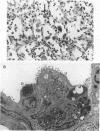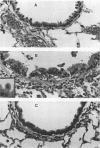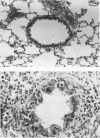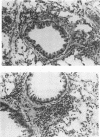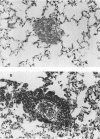Abstract
Cotton rats (Sigmodon hispidus) were inoculated intranasally with 10(2.0) to 10(10.0) PFU of human adenovirus type 5. The virus replicated to a high titer in pulmonary tissues, with the peak titer being proportional to the input dose. The 50% lethal dose was 10(9.4) PFU. Histopathologic changes were proportional to the infecting inoculum and included the infiltration of interstitial and intra-alveolar areas, moderate damage to bronchiolar epithelium, and cellular infiltration of peribronchiolar and perivascular regions. These changes could be divided into two phases: an early phase (affecting alveoli, bronchiolar epithelium, and peribronchiolar regions) with an infiltrate consisting primarily of monocytes-macrophages and neutrophils, with occasional lymphocytes, and a later phase (affecting peribronchiolar and perivascular regions) with an infiltrate consisting almost exclusively of lymphocytes. In both phases, the predominant process was the response of the host to infection, rather than direct viral damage to infected cells. An infecting inoculum of 10(8.0) PFU or larger caused severe damage to type II alveolar cells, which were swollen, showed a loss of lamellar bodies, and were surrounded by polymorphonuclear leukocytes and macrophages. No evidence of complete viral replication was found in type II alveolar cells.
Full text
PDF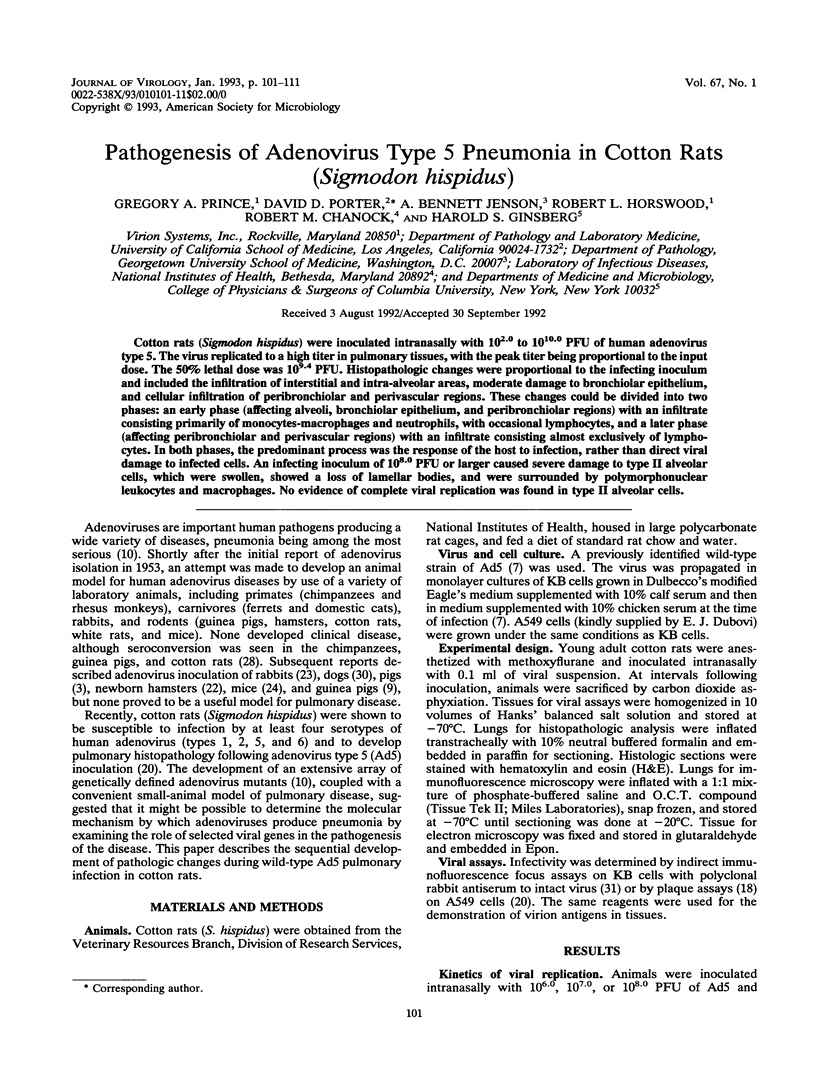
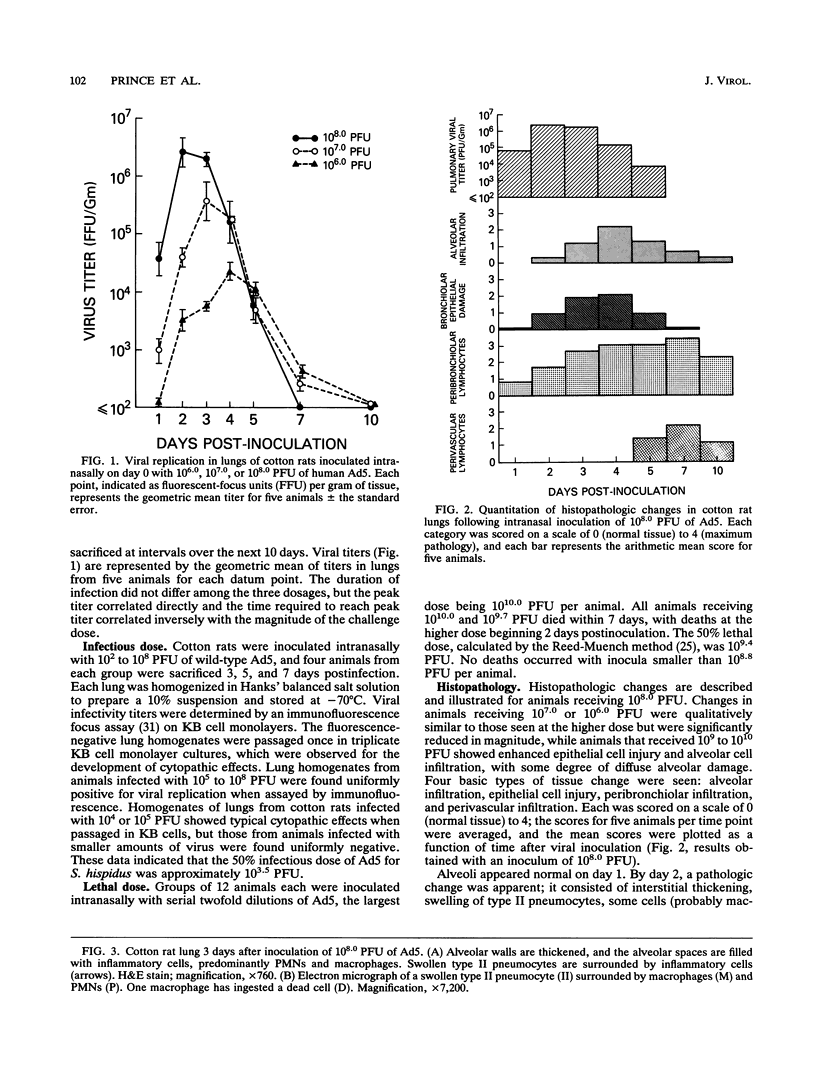
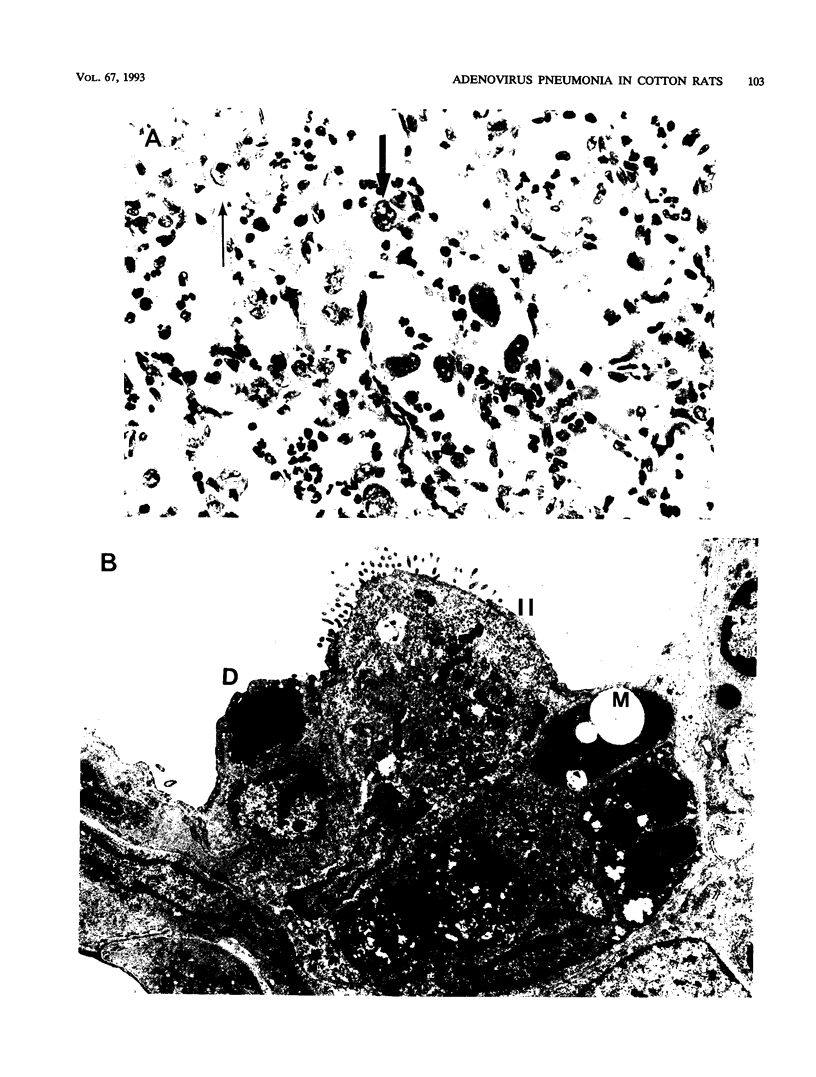

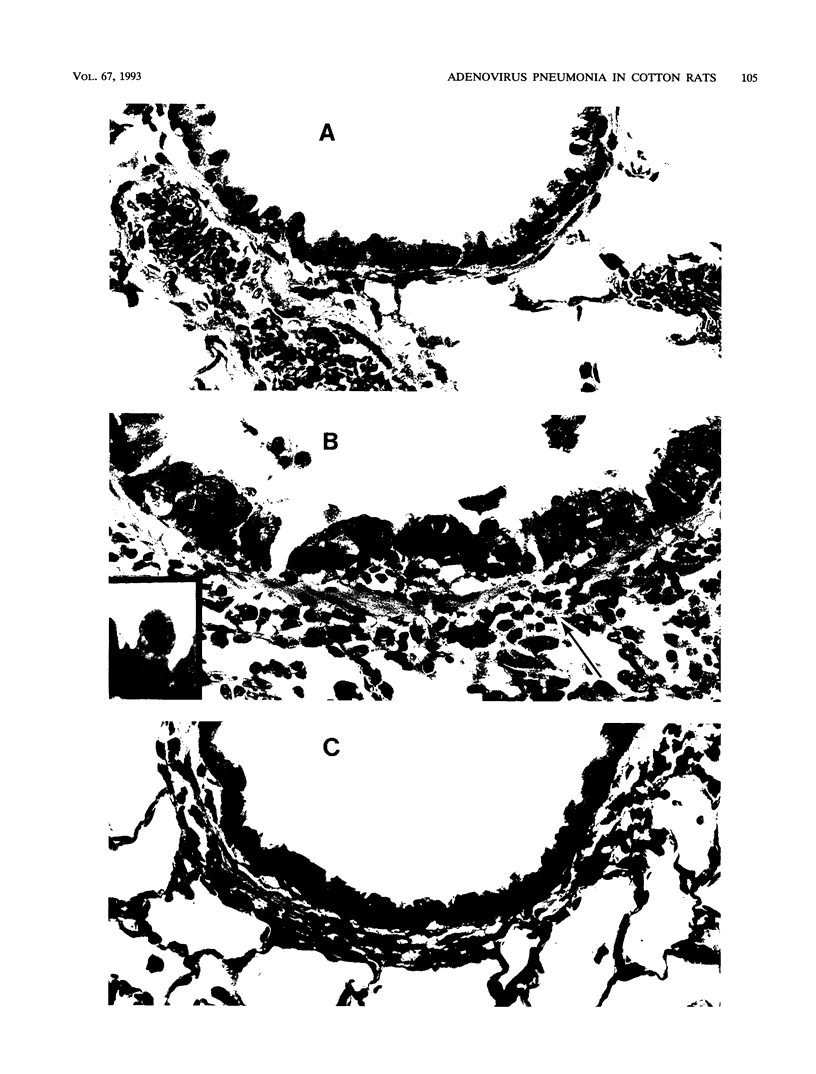
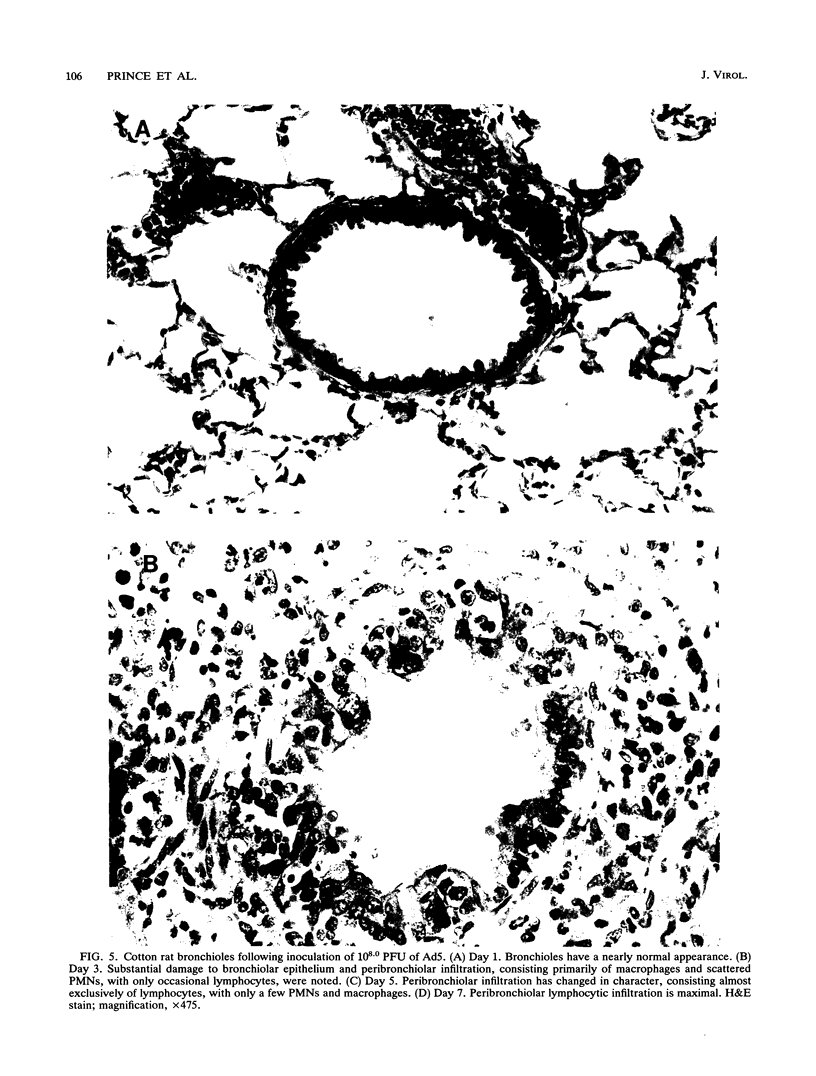
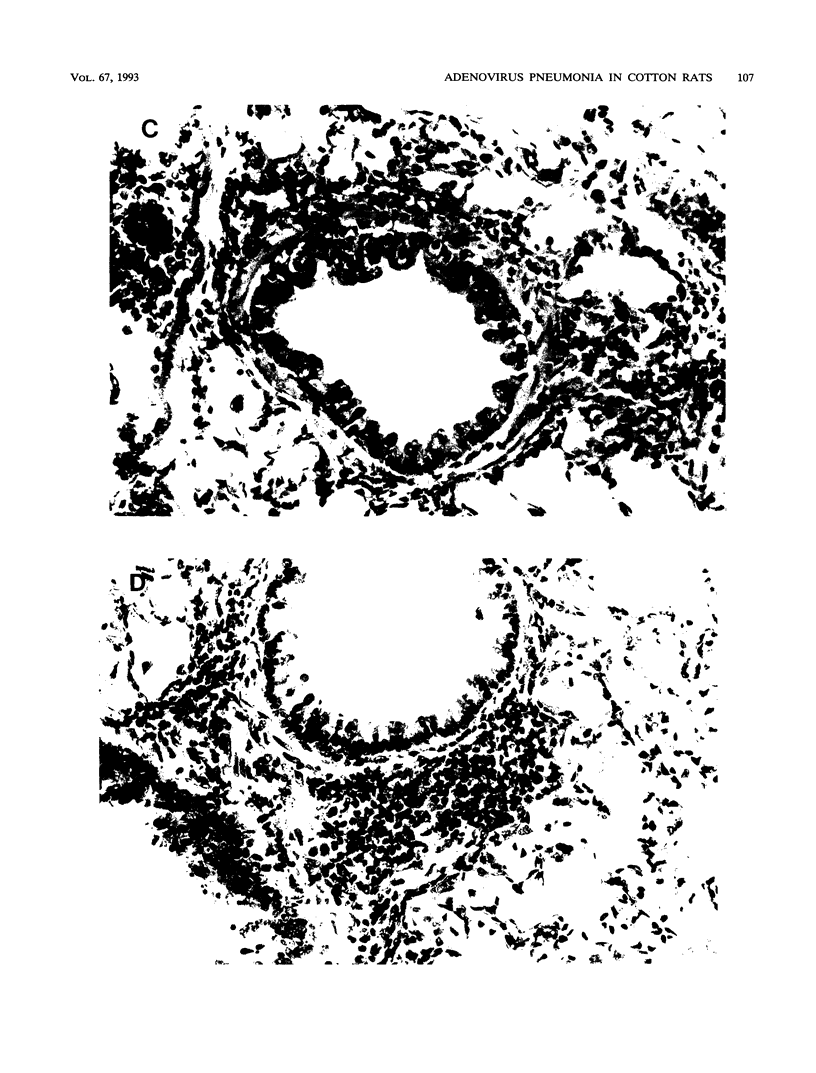
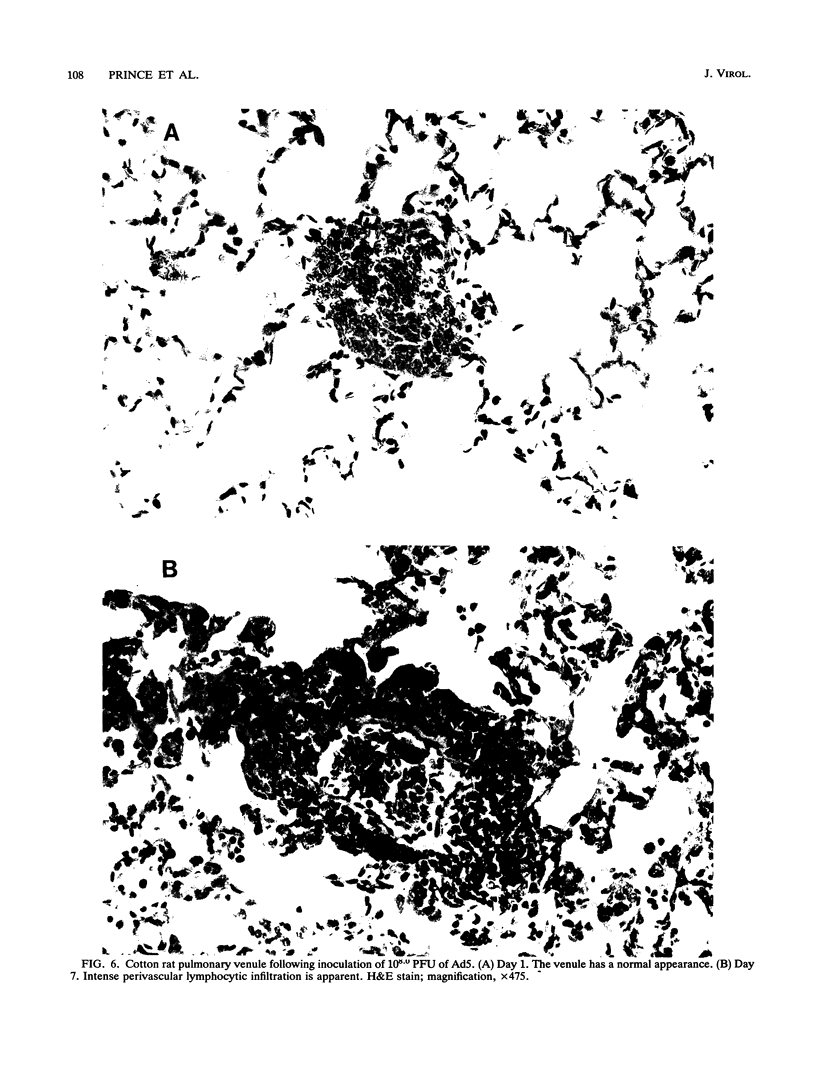
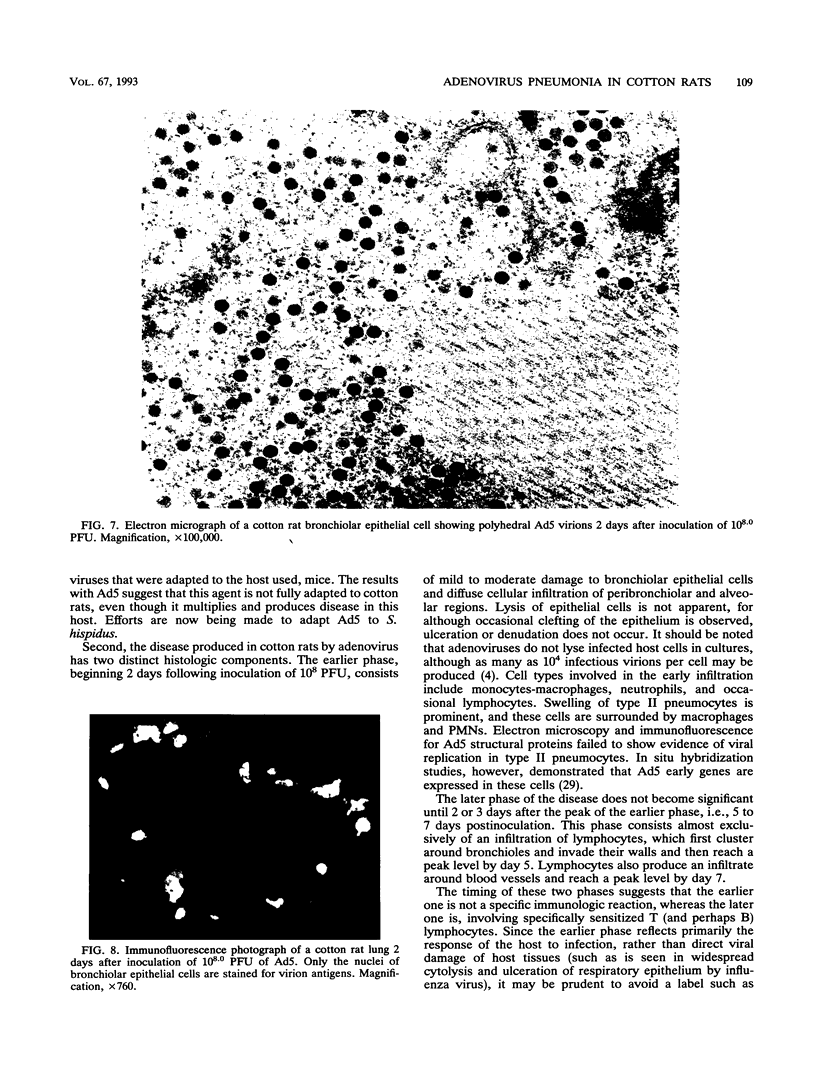
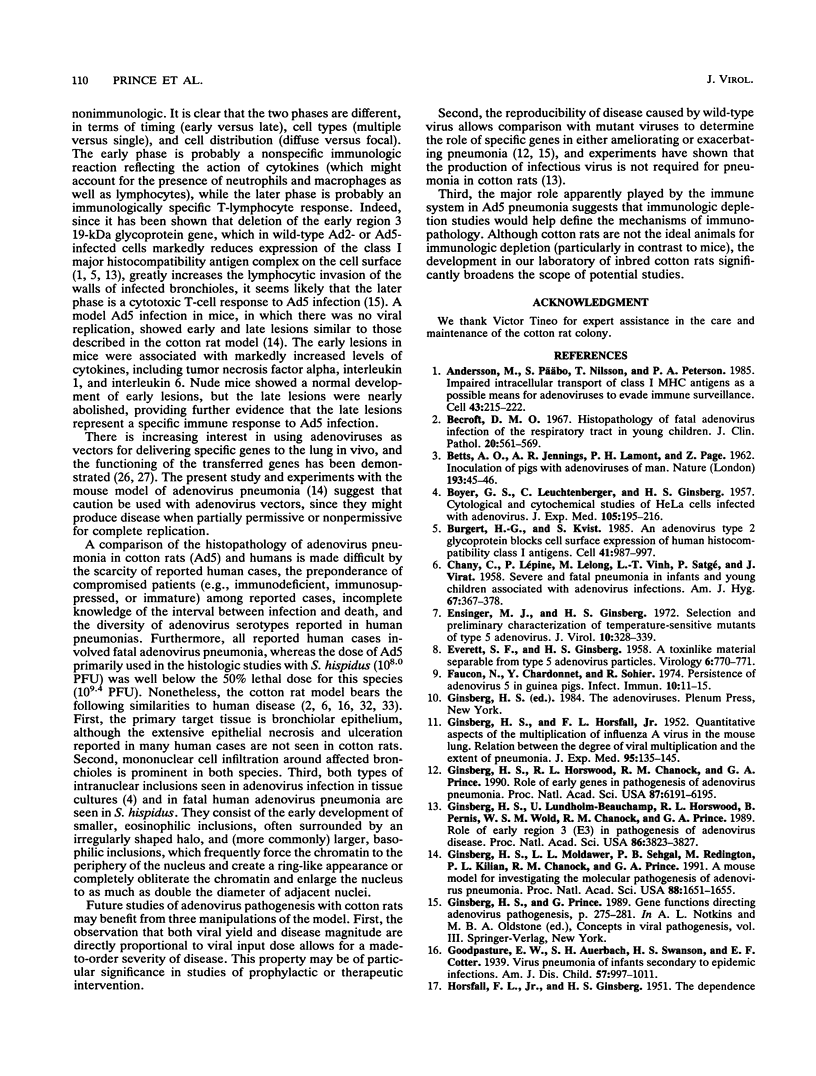
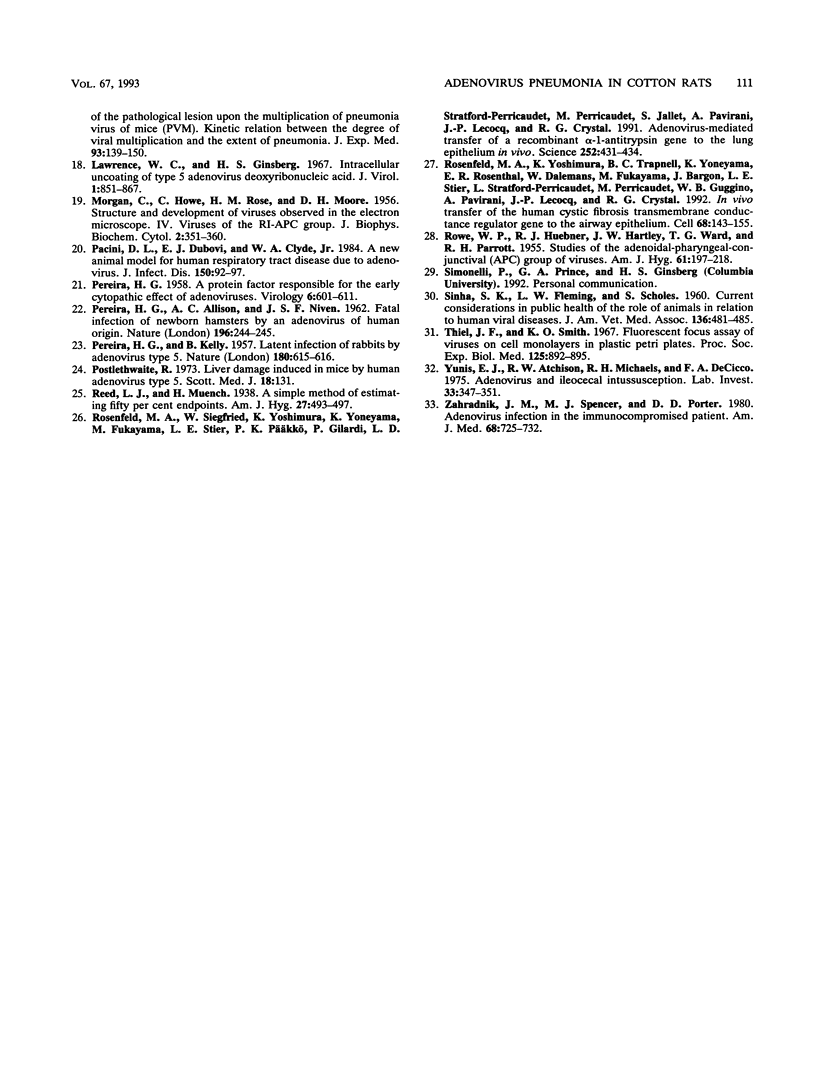
Images in this article
Selected References
These references are in PubMed. This may not be the complete list of references from this article.
- Andersson M., Päbo S., Nilsson T., Peterson P. A. Impaired intracellular transport of class I MHC antigens as a possible means for adenoviruses to evade immune surveillance. Cell. 1985 Nov;43(1):215–222. doi: 10.1016/0092-8674(85)90026-1. [DOI] [PubMed] [Google Scholar]
- BETTS A. O., JENNINGS A. R., LAMONT P. H., PAGE Z. Inoculation of pigs with adenoviruses of man. Nature. 1962 Jan 6;193:45–46. doi: 10.1038/193045a0. [DOI] [PubMed] [Google Scholar]
- BOYER G. S., LEUCHTENBERGER C., GINSBERG H. S. Cytological and cytochemical studies of HeLa cells infected with adeno-viruses. J Exp Med. 1957 Mar 1;105(3):195–216. doi: 10.1084/jem.105.3.195. [DOI] [PMC free article] [PubMed] [Google Scholar]
- Becroft D. M. Histopathology of fatal adenovirus infection of the respiratory tract in young children. J Clin Pathol. 1967 Jul;20(4):561–569. doi: 10.1136/jcp.20.4.561. [DOI] [PMC free article] [PubMed] [Google Scholar]
- Burgert H. G., Kvist S. An adenovirus type 2 glycoprotein blocks cell surface expression of human histocompatibility class I antigens. Cell. 1985 Jul;41(3):987–997. doi: 10.1016/s0092-8674(85)80079-9. [DOI] [PubMed] [Google Scholar]
- CHANY C., LEPINE P., LELONG M., LE T. V., SATGE P., VIRAT J. Severe and fatal pneumonia in infants and young children associated with adenovirus infections. Am J Hyg. 1958 May;67(3):367–378. doi: 10.1093/oxfordjournals.aje.a119941. [DOI] [PubMed] [Google Scholar]
- EVERETT S. F., GINSBERG H. S. A toxin-like material separable from type 5 adenovirus particles. Virology. 1958 Dec;6(3):770–771. doi: 10.1016/0042-6822(58)90123-5. [DOI] [PubMed] [Google Scholar]
- Ensinger M. J., Ginsberg H. S. Selection and preliminary characterization of temperature-sensitive mutants of type 5 adenovirus. J Virol. 1972 Sep;10(3):328–339. doi: 10.1128/jvi.10.3.328-339.1972. [DOI] [PMC free article] [PubMed] [Google Scholar]
- Faucon N., Chardonnet Y., Sohier R. Persistence of Adenovirus 5 in guinea pigs. Infect Immun. 1974 Jul;10(1):11–15. doi: 10.1128/iai.10.1.11-15.1974. [DOI] [PMC free article] [PubMed] [Google Scholar]
- GINSBERG H. S., HORSFALL F. L., Jr Quantitative aspects of the multiplication of influenza A virus in the mouse lung; relation between the degree of viral multiplication and the extent of pneumonia. J Exp Med. 1952 Feb;95(2):135–145. doi: 10.1084/jem.95.2.135. [DOI] [PMC free article] [PubMed] [Google Scholar]
- Ginsberg H. S., Horswood R. L., Chanock R. M., Prince G. A. Role of early genes in pathogenesis of adenovirus pneumonia. Proc Natl Acad Sci U S A. 1990 Aug;87(16):6191–6195. doi: 10.1073/pnas.87.16.6191. [DOI] [PMC free article] [PubMed] [Google Scholar]
- Ginsberg H. S., Lundholm-Beauchamp U., Horswood R. L., Pernis B., Wold W. S., Chanock R. M., Prince G. A. Role of early region 3 (E3) in pathogenesis of adenovirus disease. Proc Natl Acad Sci U S A. 1989 May;86(10):3823–3827. doi: 10.1073/pnas.86.10.3823. [DOI] [PMC free article] [PubMed] [Google Scholar]
- Ginsberg H. S., Moldawer L. L., Sehgal P. B., Redington M., Kilian P. L., Chanock R. M., Prince G. A. A mouse model for investigating the molecular pathogenesis of adenovirus pneumonia. Proc Natl Acad Sci U S A. 1991 Mar 1;88(5):1651–1655. doi: 10.1073/pnas.88.5.1651. [DOI] [PMC free article] [PubMed] [Google Scholar]
- HORSFALL F. L., Jr, GINSBERG H. S. The dependence of the pathological lesion upon the multiplication of pneumonia virus of mice (PVM); kinetic relation between the degree of viral multiplication and the extent of pneumonia. J Exp Med. 1951 Feb;93(2):139–150. doi: 10.1084/jem.93.2.139. [DOI] [PMC free article] [PubMed] [Google Scholar]
- Lawrence W. C., Ginsberg H. S. Intracellular uncoating of type 5 adenovirus deoxyribonucleic acid. J Virol. 1967 Oct;1(5):851–867. doi: 10.1128/jvi.1.5.851-867.1967. [DOI] [PMC free article] [PubMed] [Google Scholar]
- ORNSTEIN L. Mitochondrial and nuclear interaction. J Biophys Biochem Cytol. 1956 Jul 25;2(4 Suppl):351–352. doi: 10.1083/jcb.2.4.351. [DOI] [PMC free article] [PubMed] [Google Scholar]
- PEREIRA H. G. A protein factor responsible for the early cytopathic effect of adenoviruses. Virology. 1958 Dec;6(3):601–611. doi: 10.1016/0042-6822(58)90109-0. [DOI] [PubMed] [Google Scholar]
- PEREIRA H. G., KELLY B. Latent infection of rabbits by adenovirus type 5. Nature. 1957 Sep 21;180(4586):615–616. doi: 10.1038/180615b0. [DOI] [PubMed] [Google Scholar]
- Pacini D. L., Dubovi E. J., Clyde W. A., Jr A new animal model for human respiratory tract disease due to adenovirus. J Infect Dis. 1984 Jul;150(1):92–97. doi: 10.1093/infdis/150.1.92. [DOI] [PubMed] [Google Scholar]
- Rosenfeld M. A., Siegfried W., Yoshimura K., Yoneyama K., Fukayama M., Stier L. E., Päkkö P. K., Gilardi P., Stratford-Perricaudet L. D., Perricaudet M. Adenovirus-mediated transfer of a recombinant alpha 1-antitrypsin gene to the lung epithelium in vivo. Science. 1991 Apr 19;252(5004):431–434. doi: 10.1126/science.2017680. [DOI] [PubMed] [Google Scholar]
- Rosenfeld M. A., Yoshimura K., Trapnell B. C., Yoneyama K., Rosenthal E. R., Dalemans W., Fukayama M., Bargon J., Stier L. E., Stratford-Perricaudet L. In vivo transfer of the human cystic fibrosis transmembrane conductance regulator gene to the airway epithelium. Cell. 1992 Jan 10;68(1):143–155. doi: 10.1016/0092-8674(92)90213-v. [DOI] [PubMed] [Google Scholar]
- SINHA S. K., FLEMING L. W., SCHOLES S. Current considerations in public health of the role of animals in relation to human viral diseases. J Am Vet Med Assoc. 1960 May 15;136:481–485. [PubMed] [Google Scholar]
- Thiel J. F., Smith K. O. Fluorescent focus assay of viruses on cell monolayers in plastic Petri plates. Proc Soc Exp Biol Med. 1967 Jul;125(3):892–895. doi: 10.3181/00379727-125-32232. [DOI] [PubMed] [Google Scholar]
- Yunis E. J., Atchison R. W., Michaels R. H., DeCicco F. A. Adenovirus and ileocecal intussusception. Lab Invest. 1975 Oct;33(4):347–351. [PubMed] [Google Scholar]
- Zahradnik J. M., Spencer M. J., Porter D. D. Adenovirus infection in the immunocompromised patient. Am J Med. 1980 May;68(5):725–732. doi: 10.1016/0002-9343(80)90262-4. [DOI] [PubMed] [Google Scholar]



